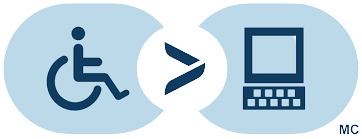Physiotherapy: An Overview
Sometimes, your body sends you pain signals to tell you something is wrong. It could be an ankle sprain or a strained ligament. It could be the persistent pain in the neck and shoulders while staring down at a laptop. It could also be the result of an injury or disease.
Whatever the reason, and wherever the location, this type of pain may bring your daily routine to a grinding halt, impede your progress, and cause mental distress.
You may have that one friend who is great at giving massages, but even they can only do so much. This is where physiotherapy comes in like a Godsend! Many people have heard about physiotherapy, but also wonder “What do physiotherapists do, exactly?” If you, too, have that question in mind, read on to find out!
What is physiotherapy?
Physiotherapy is a branch of medical science that deals with the treatment of musculoskeletal injury, disease, and disorders through the application of physical methods. It involves exercises, manipulation, various forms of therapy (such as heat, ultrasound, etc.), massage, and so on. The aim of physiotherapy exercises is to provide relief from pain, maximize strength, and restore proper functioning, at least to a certain extent, to injured or diseased parts of the body.
What do physiotherapists do?
The role of a physiotherapist is not really fixed. It depends on the kind of problem that the patient presents. First, a physiotherapist may have to assess the patient’s condition and diagnose the problem. They may also have to devise a treatment plan based on another doctor’s diagnosis, as in cases of retraining patients to walk, helping patients with crutches and wheelchairs, etc.
Physiotherapists also prescribe exercises that can be done at home to add to the therapy and to prevent further occurrence of such problems. A physiotherapist’s job may range from tending to children with cerebral palsy, to pregnant women, to athletes and the elderly. Premature babies, those recovering from surgery or strokes, and people in rehab may also be included in the list of patients.
The three different areas of practice include:
-
Musculoskeletal or orthopaedic physiotherapy, which includes conditions such as sprains, arthritis, posture problems, sports injuries, reduced mobility, rehabilitation after surgery, back pain, etc.
-
Neurological physiotherapy, which treats strokes, spinal cord injuries, multiple sclerosis, Parkinson’s disease, and the aftereffects of brain surgery.
-
Cardiothoracic physiotherapy, which is used in the treatment of asthma, chronic bronchitis, and other cardio-respiratory disorders.
The methods of therapies are manual therapies, physiotherapy exercises, and electrotherapy. While other therapies require equipment and the physiotherapist’s presence, some exercises can be done at home. Simple physiotherapy exercises include back stretches, pelvic tilts, wrist lifts and flexes, neck turns and stretches, leg stretches and step ups, pendulum exercise, etc. Each part of the body requires a specific set of exercises, which the physiotherapist teaches the patient.
Advanced Physiotherapy
The role of the practitioners of advanced physiotherapy is to refer patients to surgeons based on diagnosis, do a comprehensive patient assessment, educate patients on treatment options and resources, and conduct student education and research programmes. They also handle postoperative follow-up treatment after discharge.
When pain becomes a daily part of your life, you tend to invent your own forms of exercise and modes of coping with it – which may sometimes prove more damaging than helpful. It can be as dangerous as self-medication. A physiotherapist provides you with a correct diagnosis and suitable, powerful treatment that can, in many cases, drive the discomfort away forever. At Don Valley Health and Wellness Centre , we work with you as a team and focus on getting you better as quickly as possible. You can visit us here: https://dvhealthandwellness.com/
Do you know what the benefits of physiotherapy ? Read more
The post Physiotherapy: An Overview appeared first on Don Valley Health & Wellness – Physiotherapy Rehabilitation & Sports Centre.








